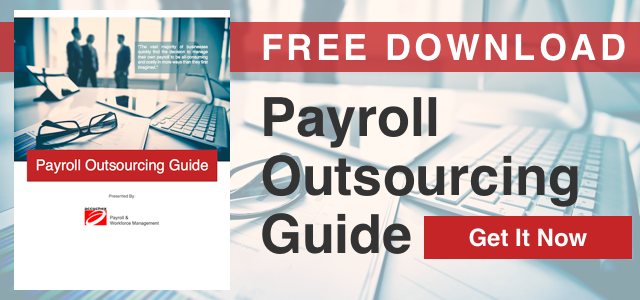 What was once considered a humane benefit offered by conscientious employers is fast becoming an entitlement mandated by law.
What was once considered a humane benefit offered by conscientious employers is fast becoming an entitlement mandated by law.
Back in 2011, Connecticut became the first state to have a paid sick leave law. Over the four years since, a growing number of cities have enacted such laws. In San Francisco, that city's paid sick leave ordinance mandated that employers provide covered employees with paid sick leave of up to 72 hours annually, at an accrual rate of one hour for every 30 hours worked.
Then, on September 10, 2014, Governor Jerry Brown signed the Healthy Workplaces, Healthy Families Act of 2014. The Act requires all California employers to provide employees with one hour of paid sick leave for every 30 hours worked starting on July 1, 2015.
Navigating the impact of Paid Sick Leave law
For HR and payroll professionals, already burdened with an every-growing body of new employer rules and regulations, this means more administrative obligations.
Because there is a real financial cost associated with the mismanagement of paid sick leave it is critical that these obligations are fully understood and complied with.
Employers that violate the law will face administrative fines. The law also authorizes the Labor Commissioner or the Attorney General to recover civil penalties, attorneys’ fees, costs, and interest against violating employers, as well as to reinstate employees.
- Regulations regarding accrual, usage and carryover. The Act regulates how paid sick leave is accrued and can be used, and how unused time can carry over.
- Pay calculations during sick leave. Sick leave pay rates are fairly straightforward for hourly employees, but a bit more complicated to calculate for salaried employees and employees that work at different pay rates or receive commissions.
- Record keeping obligations for employers. Companies are responsible for time tracking and record keeping, including providing employees with paid sick leave balances and maintaining sick leave records for three years.
3 Tips For Managing Paid Sick Leave
Compliance and accuracy are the hallmarks of HR and payroll professionals. Here are three best practices to help you manage your paid sick leave administrative obligations:
1. Familiarizing yourself with the law.
Take time to understand the law in order to develop your management strategy. Many businesses already provide paid sick leave that will exempt them from some requirements as long as their policy meets certain criteria.
Monitor how other businesses plan to integrate the management and reporting requirements of the law. In addition, consult with your legal counsel on questions about the law itself as well as exemptions and exceptions to ensure you’re fully aware of your legal obligations. Unfortunately, some minor aspects of the Act's language is uncertain and could create issues after July 1st.
2. Automate administrative tasks where possible
Automation provides a powerful way to streamline sick leave administration, and most other time and attendance functions. Not only can it ensure accuracy, good software eliminates the need for manual data collection and reporting tasks.
If you already employ an automated system, much of what you need may already be available to you. Many of your tasks, like tracking hours worked, calculating sick leave pay rules, and tallying and reporting accrual and available balances can be easily added or updated in your time and attendance system.
If, however. your business does not use a program for time and attendance, or your current system will not allow the necessary upgrades, it would be beneficial to purchase and install a new system, or consider outsourcing those functions to a payroll service provider like Accuchex.
3. Maintain accurate records.
This should go without saying, but, because of the increasing threat of fines and legal action by the State and local agencies, it bears repeating. Record keeping obligations are a common requirement in labor-related legislation, and almost always falls on employers.
For paid sick leave, important records include hours worked, amount of leave accrued, and amount of leave taken for every individual employee. Additionally, the law mandates that these records must be kept for at least three years.
Often, however, these records can be maintained by your existing payroll management software. If that is the case, then your existing reporting capabilities will allow you to access this information quickly and accurately. Proactive record keeping helps ensure compliance can demonstrates due diligence on the part of your company, while making the information quickly accessible if there is a dispute.
Streamline your Paid Sick Time process
A streamlined sick leave strategy will help your organization meet its obligations, while providing accuracy and timeliness. So take time to understand the law, automate sick leave tracking and calculations, and prioritize accurate record keeping. In this way, you will make compliance a sure thing.
Another key step in maintaining HR compliance and increasing your company's cost-effectiveness is to consider outsourcing. A professional agency such a Accuchex can provide much-needed help with Human Resources needs and questions. Accuchex is a full spectrum Payroll Management Services provider offering expertise in Time Management, Insurance and Retirement issues, as well.
If you are looking for reliable resource for your HR issues, we can help. And you can get your Free Download: Payroll Outsourcing Guide to help you make an informed decision, or call Accuchex Payroll Management Services at 877-422-2824.


